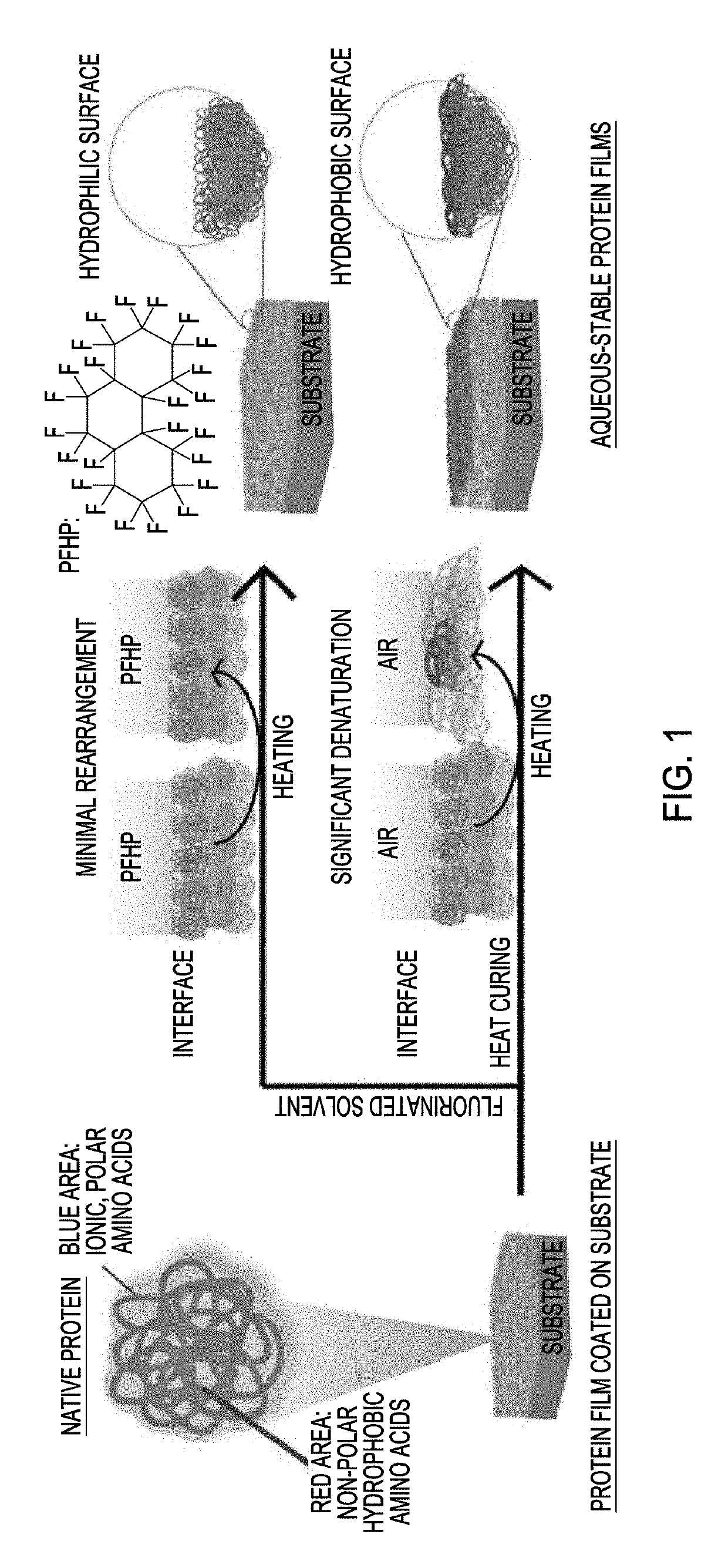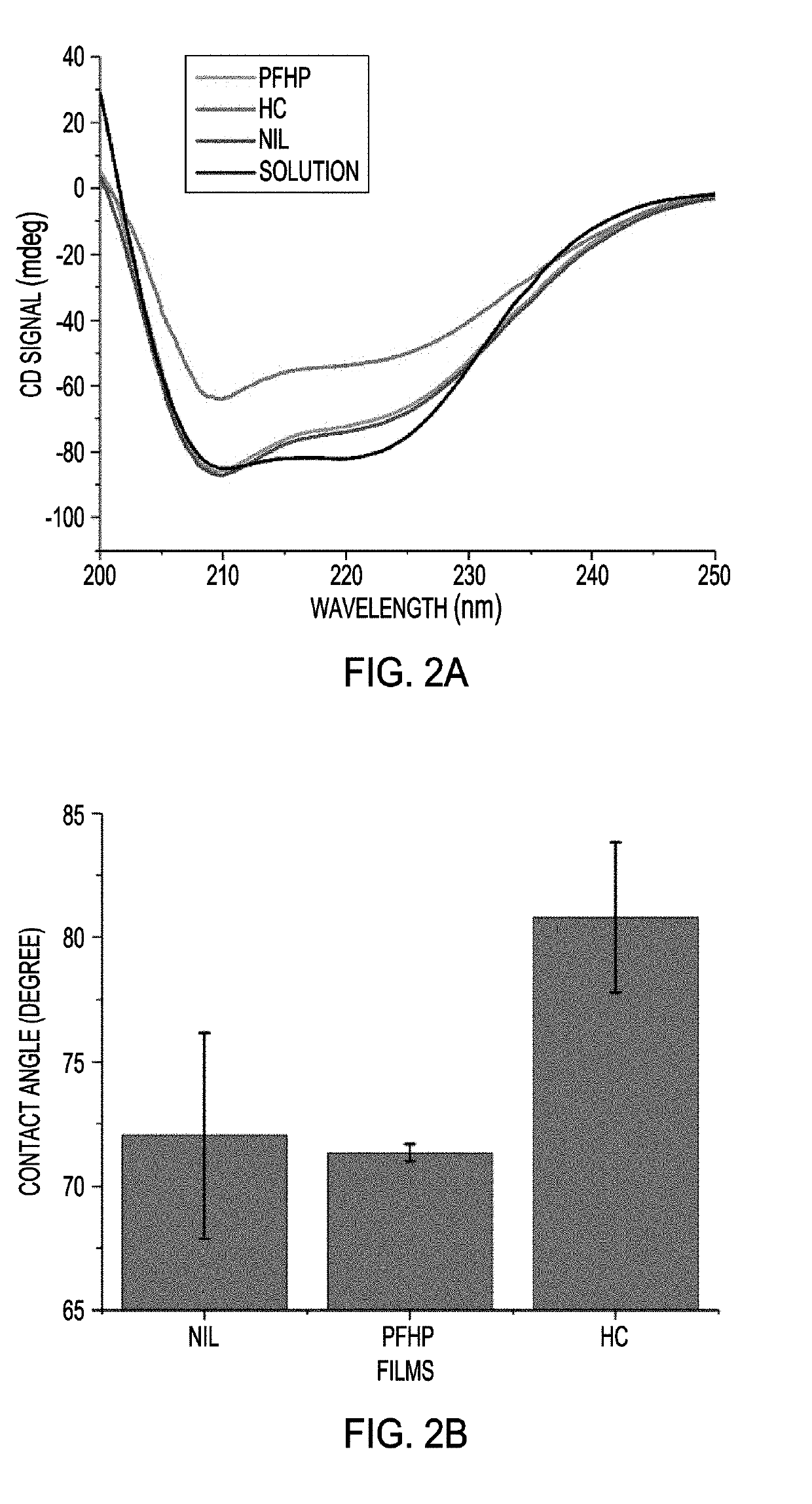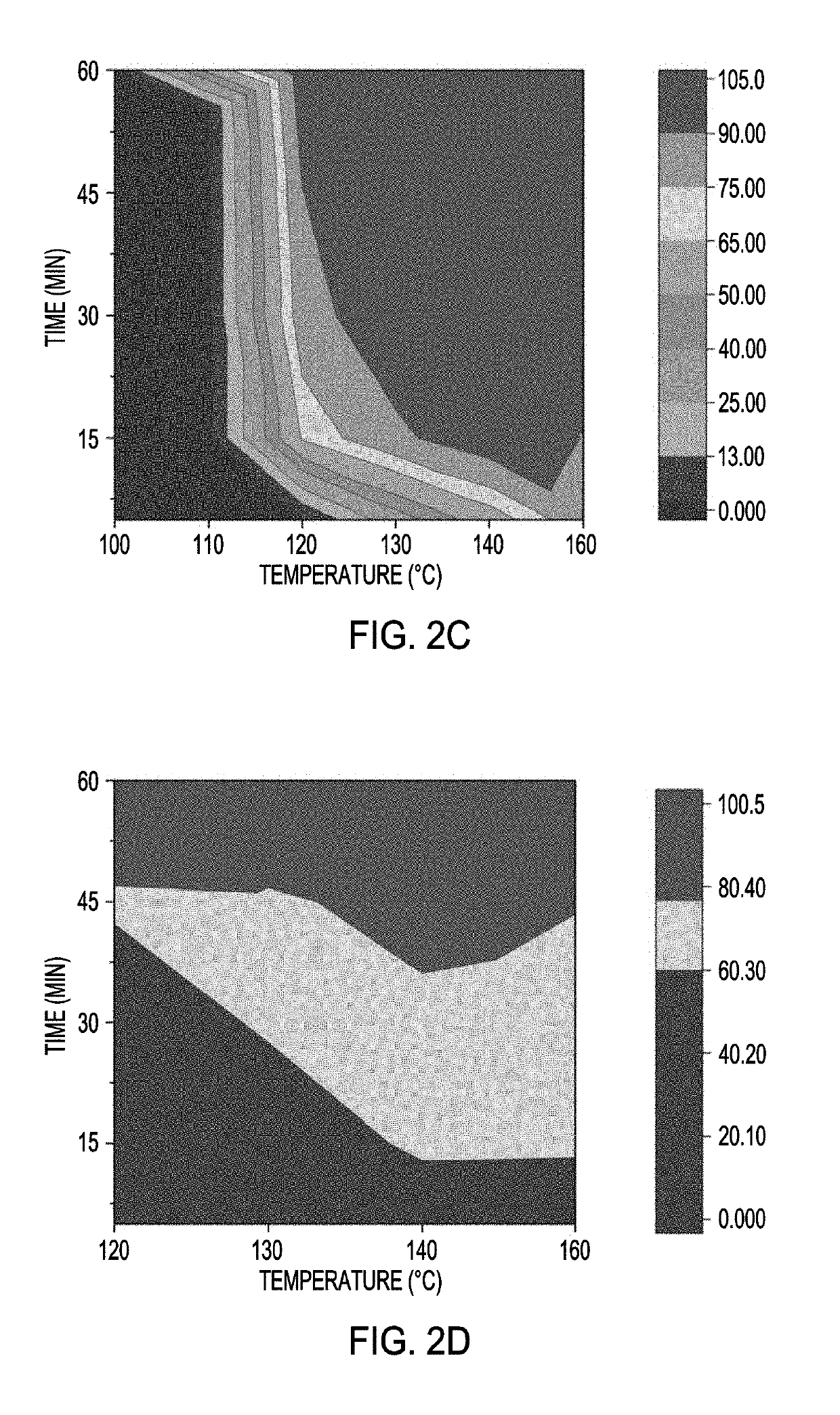Generation of stable protein films using fluorous solvent
- Summary
- Abstract
- Description
- Claims
- Application Information
AI Technical Summary
Benefits of technology
Problems solved by technology
Method used
Image
Examples
example 1
Film Surface Properties
[0081]Different biomaterial applications require films with different surface properties. For example, positively charged surfaces promote cellular attachment, which can be employed for tissue engineering; zwitterionic or negatively charged surfaces are suitable for bio-inert coatings, especially for medical implants. Based on the method's ability of controlling surface potential of protein films, the functional demonstration of charged protein films was performed using cellular adhesion studies (FIG. 3). 3T3-L1 fibroblast cells were seeded onto the protein films for 24 hours and examined by microscopy after washing with PBS (FIG. 3b).
[0082]PFHP-LYSO provided excellent adhesion for 3T3-L1, while PFHP-BSA showed exceptional anti-fouling property. Those results are in agreement with our previous observation of NIL films. In contrast, heat-cured films show no control of cellular adhesion, indicating the surface properties of protein precursors were lost during th...
example 2
Dynamic Range of Perfluoro-Stabilized Films
[0084]Initial protein stabilization and denaturation studies focused on bovine serum albumin (BSA, an anionic protein). Protein films of thickness ˜200 nm were generated by spin-casting 10% w / w BSA solution onto plasma-cleaned substrates (FIG. 5). These water-soluble films were next stabilized by heating at 180° C. in perfluoroperhydrophenanthrene (PFHP), air, or using NIL. The secondary structure of protein building blocks in each film was characterized using circular dichroism spectroscopy. Consistent with our prior studies, a substantial amount of the secondary structure was retained in films stabilized by PFHP and NIL.
[0085]In contrast, protein films stabilized by traditional heat-curing (HC) resulted in massive loss of native structure (FIG. 2a). Protein denaturation can induce surface hydrophobicity, resulting in uncontrollable surface properties of protein films. The correlation between structure retention and surface hydrophobicity ...
example 3
Protein Structure Retention
[0089]The retention of protein structure and surface hydrophilicity of PFHP stabilized films implies that proteins' molecular properties, such as degradability and surface charge, can be imported into macroscopic films for different biomaterial applications. The biodegradability was demonstrated by incubating protein films with trypsin. Despite the protein films stabilized by PFHP were insoluble in aqueous, these stable protein films were still accessible by protease (FIGS. 7a-c).
[0090]In addition to the retention of biodegradability, the translation of surface charge into protein films was demonstrated using cationic lysozyme (LYSO, pI 11) and anionic BSA (pI 4.8) as protein precursors. The surface potential of resulting films was acquired using Kelvin Probe Force Microscopy (KPFM). The PFHP-LYSO surface exhibits a higher surface potential as compared to PFHP-BSA (FIG. 3a).
[0091]The potential difference between PFHP-LYSO and PFHP-BSA is 2.8 V, which remai...
PUM
| Property | Measurement | Unit |
|---|---|---|
| Temperature | aaaaa | aaaaa |
| Temperature | aaaaa | aaaaa |
| Temperature | aaaaa | aaaaa |
Abstract
Description
Claims
Application Information
 Login to View More
Login to View More - R&D
- Intellectual Property
- Life Sciences
- Materials
- Tech Scout
- Unparalleled Data Quality
- Higher Quality Content
- 60% Fewer Hallucinations
Browse by: Latest US Patents, China's latest patents, Technical Efficacy Thesaurus, Application Domain, Technology Topic, Popular Technical Reports.
© 2025 PatSnap. All rights reserved.Legal|Privacy policy|Modern Slavery Act Transparency Statement|Sitemap|About US| Contact US: help@patsnap.com



